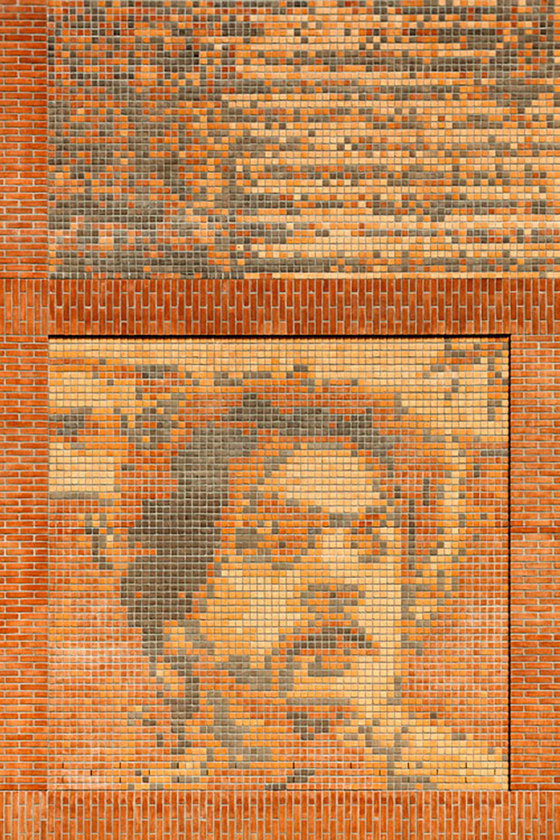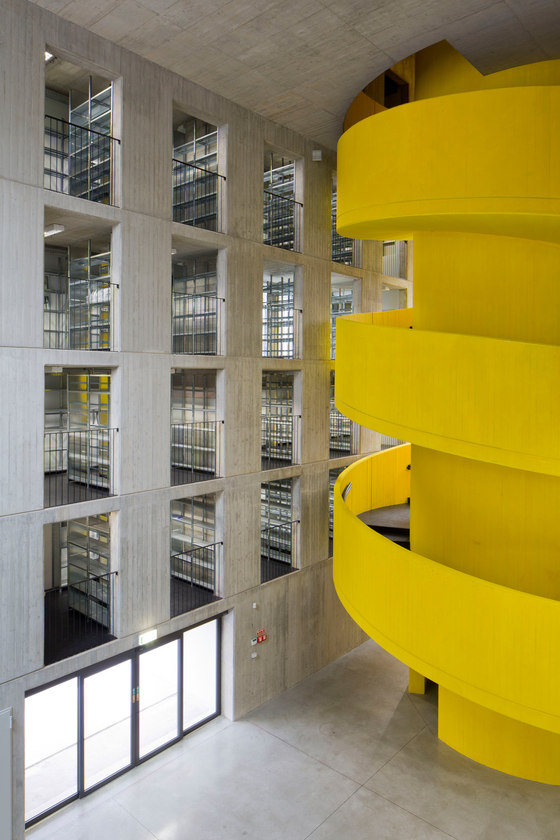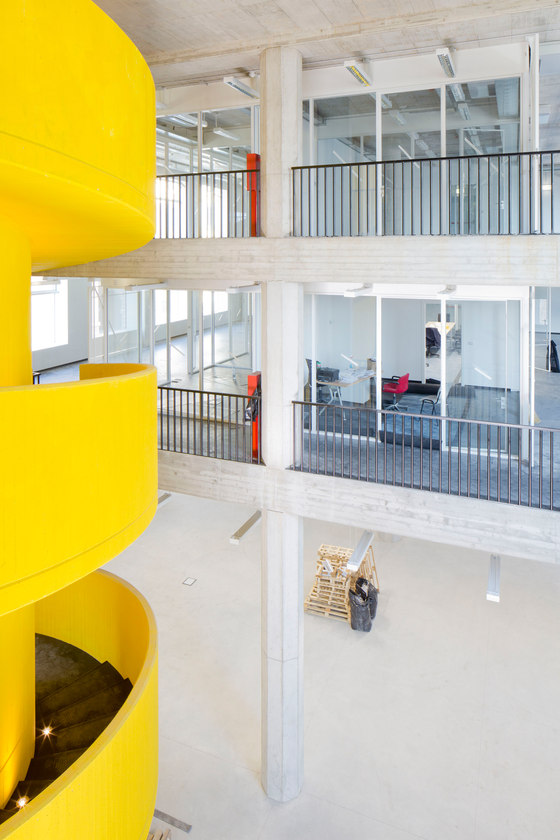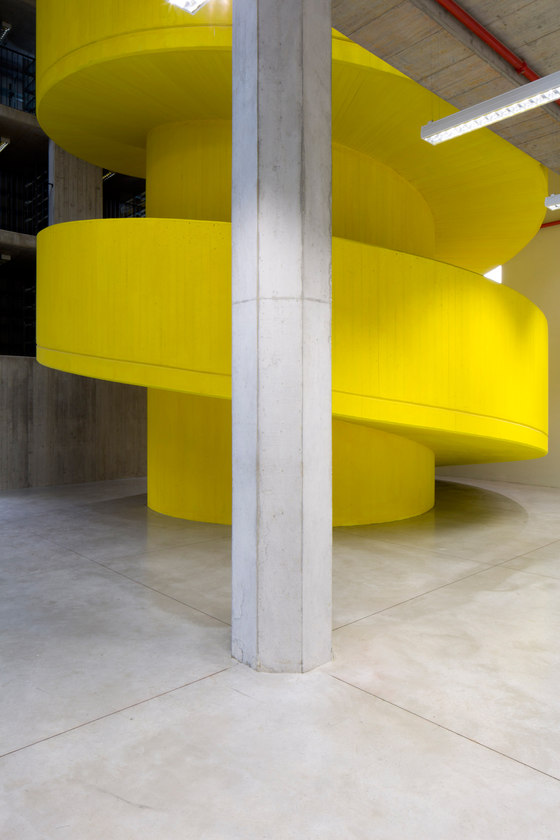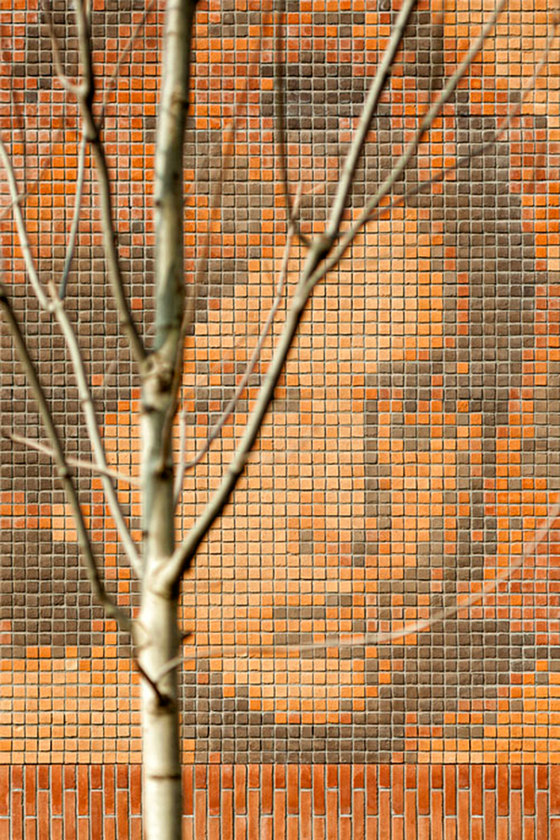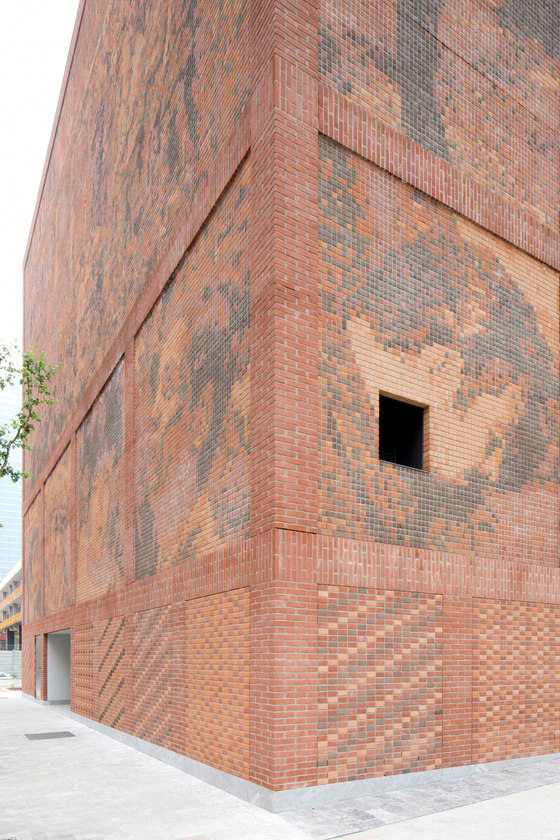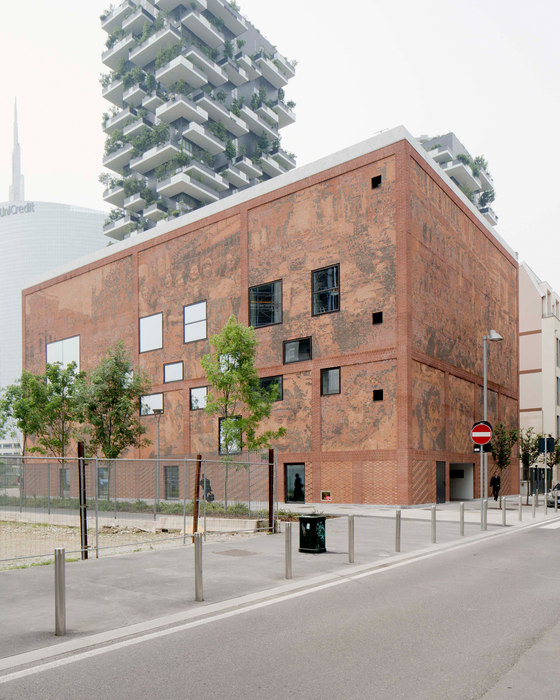The House of Memory is a house, a collective house in which Milanese citizens hope to find protection for the memories they want to preserve. Nobody inhabits this house, and in this case the word house is understood as an envelope, a protected space, or a shelter that crystallizes memory within the flow of the metropolis. So the house becomes an object to be both protected and exhibited, a treasury to be surrounded with an envelope that both defends and exposes its content.
The House of Memory is entirely covered with large images depicting Milan’s recent history. The shell of the new building is understood as a contemporary polyptych: the decorated façade, more than defining a shared memory, exposes the need for such sharing. For this reason the images collected on the envelope of the House of Memory are at the same time explicitly monumental and deliberately fragile. In fact, given their construction, the images appear more clearly from afar and then they lose clarity by coming closer. This exterior decoration in polychrome brickwork establishes a direct relation with the Lombard tradition of buildings such as the Ospedale Maggiore and Santa Maria delle Grazie.
The House of Memory is a very simple building: it is a box of 20m by 35m and 17.5m high. The building is divided into three parts that are connected to one another by an entirely open ground floor. Two thin layers along the building’s shorter ends house the archive, the restrooms and technical installations, the vertical circulation. The open space at the ground floor is subdivided in three parts by two octagonal columns. One third of this area reaches the building’s full height and includes a yellow spiral staircase. The rest is occupied by exhibition spaces and offices disposed on three levels.
The yellow staircase is not only the building’s main distributive element, but it is also the device that establishes a relation among the visitors and the collection. Given that the preciousness of the archive does not allow the visitors to directly access to the documents, the relationship between the citizens and the collection is established through the rotating movement created by the staircase. The visitor repeatedly comes closer to and then moves away from the collection, thereby experiencing a complex sequence of views of the documents and, behind them, of the park outside.
Baukuh


